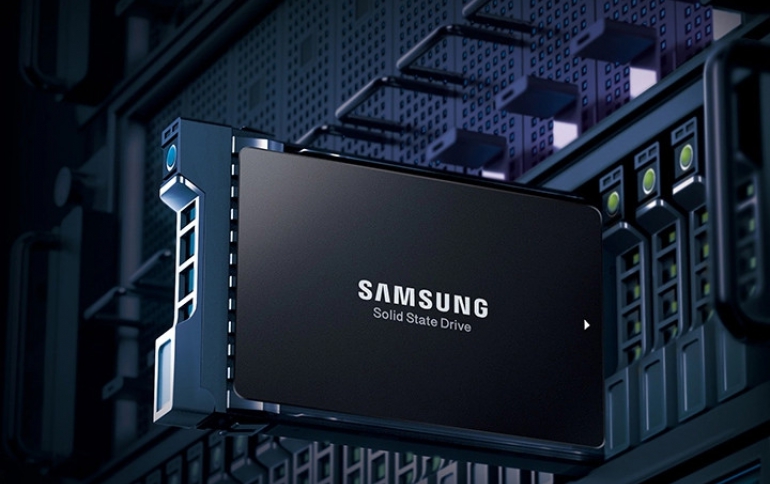
Samsung Develops First “Key Value” SSD Prototype
Samsung announced development of the first standards-based prototype of a new type of SSD that features scalability, durability and CPU-relieving functionality.
Samsung’s KV SSD prototype moves the storage workload from today’s server CPUs into the SSD without the need for any supportive device, which will lead to greater storage-related software and hardware efficiency.
“Our KV SSD prototype is leading the industry into a new realm of standardized next-generation SSDs, one that we anticipate will go a long way in optimizing the efficiency of network storage and extending the processing power of the server CPUs to which they’re connected,” said Hangu Sohn, Vice President of NAND Product Planning, Samsung Electronics.
Samsung’s KV SSD prototype is based on a new open standard for a Key Value Application Programming Interface (KV API) that was recently approved by SNIA.
Rather than operating as a block device, the KV SSD moves resource-draining storage operations from the host CPU to the SSD itself. This results in:
- Much-improved system-level performance
- Freeing the CPU from computational work, such as block operations and storage-level garbage collection
- Greater scalability in the number of linked SSDs by reducing CPU overload
- Greatly reduced write amplification (WAF)
- Much less wear on each SSD
- Greater software efficiency
SNIA’s KV API standard was developed in response to concern that as the speed of SSDs further increases, system-level performance was reaching the point of saturation, allowing relatively few SSDs to be optimally interlinked. As the performance of SSDs continues to improve, the situation is expected to worsen when ever-increasing loads are placed on the CPU to manage block operations.
While there are other approaches to this now under development, KV SSD technology is likely to be the most cost-efficient for use with many storage appliances and IT systems.
Many applications that rely on software-based KV stores will need to handle garbage collection using a method called compaction. Unfortunately, system performance can be severely impacted as both the host CPU and SSD work to clear away the garbage. By moving these operations to the SSD in a straightforward, standardized manner (as just approved by SNIA), KV SSDs will represent a major upgrade in the way that storage is accessed in the future. Garbage collection can be handled entirely in the SSD, freeing the CPU to handle the computational work for which it is best suited.
Samsung is now working with software and hardware companies in building the ecosystem for its KV SSD prototype and the new SNIA KV SSD standard. In addition to Datrium, they include FairCom, MinIO, Nexenta by DDN, Pliops, and Zettar, Inc.
The Samsung KV SSD prototype is available now for companies looking at developing application software using a standardized next-generation model.





















